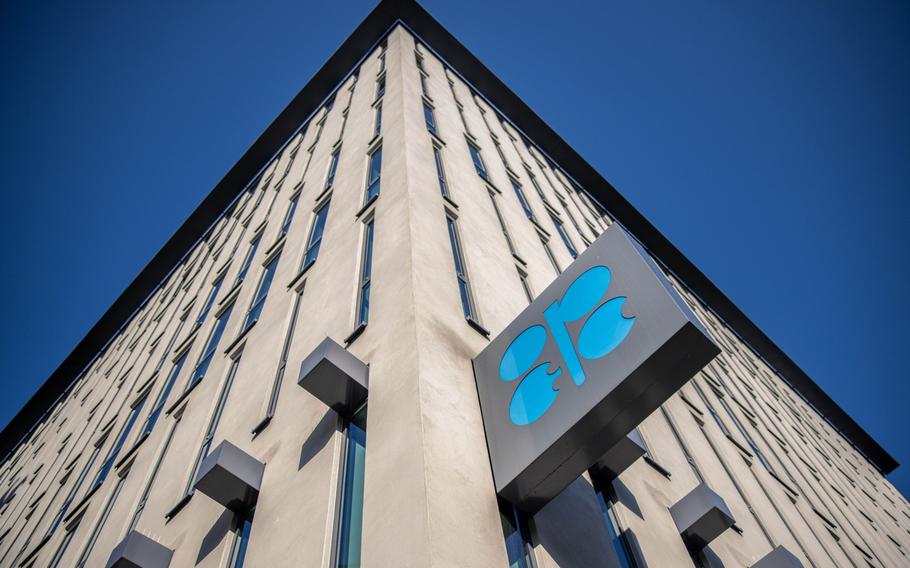
The logo of the Organization of Petroleum Exporting Countries (OPEC) on a sign at at the OPEC headquarters in Vienna on Aug. 17, 2022. (Akos Stiller/Bloomberg)
OPEC urged “vigilance and caution” on its members as it reduced estimates for the amount of crude the group will need to pump in the coming months.
The Organization of Petroleum Exporting Countries now sees a finely-balanced market in the first quarter of 2023, instead of the deficit implied by its forecasts a month ago. The group’s latest figures follow an 11% slump in crude prices last week on concerns over weaker fuel consumption.
Doubts are growing over China’s ability to abandon anti-Covid measures, and there are signs that monetary policy will continue to tighten in the U.S. Meanwhile, newly-imposed sanctions on Russian oil exports have yet to noticeably dent supplies. OPEC predicted that the world’s demand for its crude in the period will be 380,000 barrels a day lower than previously expected.
“As the year 2022 draws to a close, the recent global economic growth slowdown with all its far-reaching implications is becoming quite evident,” OPEC’s Vienna-based research department said in its monthly report. “The year 2023 is expected to remain surrounded by many uncertainties, mandating vigilance and caution.”
OPEC and its partners have only just implemented a 2 million barrel-a-day supply cut, which was announced in October. Secretary-General Haitham Al-Ghais said over the weekend that the OPEC+ pact is working by keeping world markets in equilibrium. The latest downgrade to demand offers further justification for that output reduction, which initially drew fierce criticism from the White House.
Oil prices are now trading below $80 a barrel in London, tempering the spectacular windfall enjoyed by producers earlier this year. OPEC+ member Nigeria has said the group wants to keep prices above $90.
The 23-nation alliance, jointly led by Saudi Arabia and Russia, decided earlier this month to keep supply levels unchanged in early 2023, giving the group more time to gauge the impact of its cuts. Saudi Energy Minister Prince Abdulaziz bin Salman has stressed the coalition is prepared to intervene whenever necessary, and an influential ministerial committee will meet again in February, with the power to call extraordinary OPEC+ meetings.
OPEC estimates that its 13 members will need to provide an average of 28.93 million barrels a day in the first quarter of 2023, just a little more than the 28.83 million a day they pumped in November, according to the report.
The group expects global oil demand to increase by 2.2 million barrels a day next year, to average 101.77 million barrels a day. It sees supplies from its rivals rising by 1.5 million barrels a day, about 75% of which will come from the U.S.